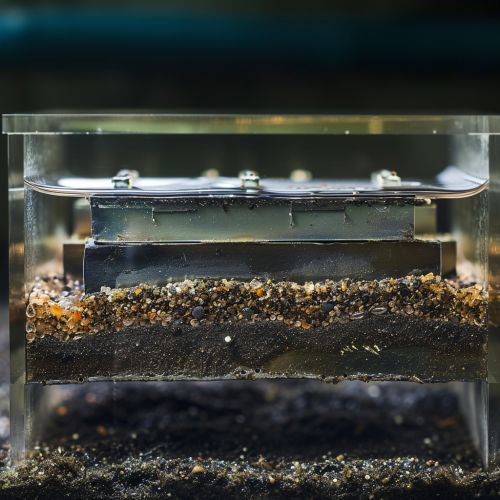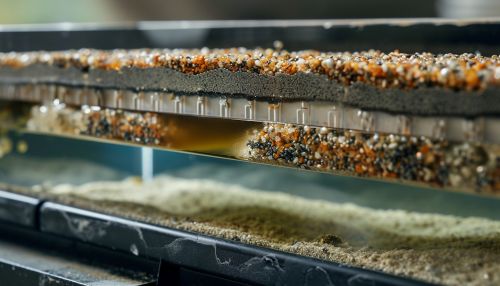Sediment Microbial Fuel Cells
Introduction
Sediment microbial fuel cells (SMFCs) are a type of MFC that generate electricity by using the chemical energy stored in organic matter found in sediments. They are a promising technology for sustainable energy production and wastewater treatment.


Working Principle
The working principle of SMFCs involves the interaction between microorganisms and the organic matter in the sediment. The microorganisms, acting as biocatalysts, oxidize the organic matter, releasing electrons and protons. The electrons are transferred to the anode and then to the cathode through an external circuit, generating an electric current. The protons, meanwhile, migrate to the cathode through the sediment and the overlying water, where they combine with the electrons and oxygen to form water.
Components of SMFCs
The main components of an SMFC include the anode, cathode, and the sediment which acts as the electrolyte. The anode is typically buried in the sediment, while the cathode is placed in the overlying water or air. The anode and cathode are connected by an external circuit, which includes a load to utilize the generated electricity.
Anode
The anode is the site of oxidation, where the microorganisms oxidize the organic matter. The anode material should be conductive and have a high surface area for microbial attachment. Commonly used anode materials include carbon cloth, carbon paper, and graphite rods.
Cathode
The cathode is the site of reduction, where the electrons and protons combine with oxygen to form water. The cathode material should be conductive and have a high oxygen reduction reaction (ORR) activity. Commonly used cathode materials include carbon cloth, carbon paper, and stainless steel mesh.
Sediment
The sediment acts as the electrolyte and the source of organic matter for the microorganisms. The sediment also provides a natural environment for the microorganisms to thrive. The type and characteristics of the sediment can significantly affect the performance of the SMFC.
Microorganisms in SMFCs
The microorganisms in SMFCs are diverse and include both bacteria and archaea. These microorganisms are capable of extracellular electron transfer (EET), a process that allows them to transfer electrons to the anode. The most common types of microorganisms found in SMFCs belong to the Geobacter and Shewanella genera.
Applications of SMFCs
SMFCs have a wide range of applications, including energy production, wastewater treatment, and environmental monitoring.
Energy Production
SMFCs can generate electricity from the organic matter in sediments, making them a sustainable and renewable source of energy. They can be used in remote areas where conventional power sources are not available or practical.
Wastewater Treatment
SMFCs can be used for the treatment of wastewater by removing organic pollutants. The microorganisms in the SMFC oxidize the organic pollutants, converting them into carbon dioxide and water.
Environmental Monitoring
SMFCs can be used for environmental monitoring by measuring the electrical output of the SMFC. Changes in the electrical output can indicate changes in the environmental conditions, such as the presence of pollutants.
Challenges and Future Directions
Despite the promising potential of SMFCs, there are several challenges that need to be addressed. These include the low power output, the difficulty in scaling up the technology, and the lack of understanding of the complex microbial communities in SMFCs. Future research should focus on improving the performance of SMFCs, developing scalable designs, and gaining a deeper understanding of the microbial communities.
